Blockchain
Blockchain Technology – DeFi Adoption Requires Quick Blocking
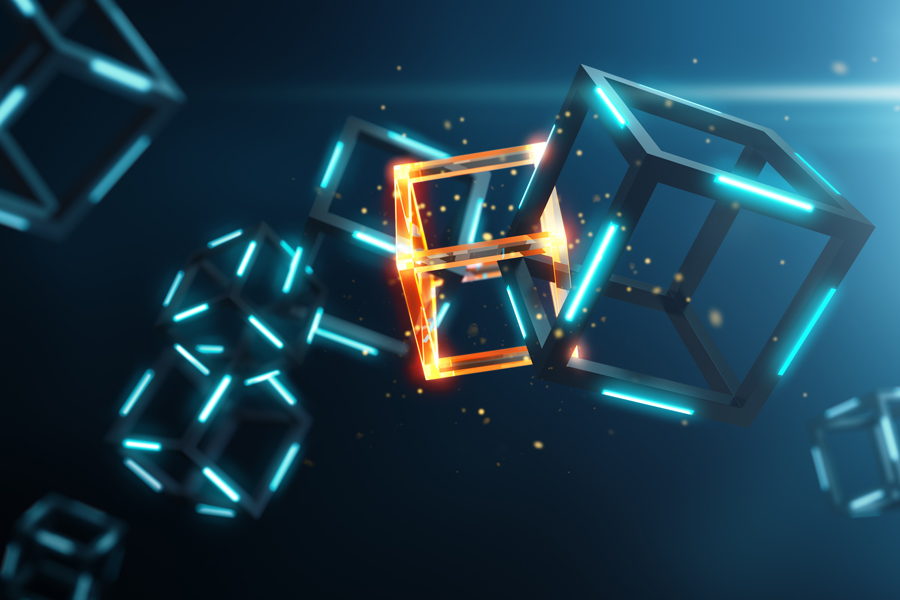
International companies use distributed led technology. Instead, try to improve efficiency in areas. Such as international payments and the clarity of purchases. That blockchain can replace slow paper processes and improve security.
However, many of the platforms used today are well-designed. Networks are blocked by traffic too fast. Most likely, this leads to latency problems, finally, in an unsatisfactory user experience.
According to McKinsey’s 2019 report, there are now more than 20 billion connected devices worldwide. First, everything “requires data management, storage, and retrieval.” However, the blockchain design is not equipped to handle this massive wave of data, forcing networks to maintain high speed and storage capacity.
Blockchain technology. Ensuring sustainability
Transaction speed is critical to blockchain adoption and sustainability. However, performance should be interrupted.
So far, developers have taken a two-prong approach. The activation of the Beacon Chain mainnet sets the ball rolling for Eth2 and Serenity. A full transition may happen in the next two years. However, the eventual rollout can be fast-tracked. Meanwhile, Vitalik Buterin and the Ethereum Foundation are focused on Layer-2 solutions like Optimistic Rollups says – Bohdan Prylepa CTO of Prof-it Blockchain Ltd and COO in Bitcoin Ultimatum.
Several factors can delay verification. Probably, the main reason is an overcrowded network. When more users submit transactions, there will be long lines of verification locations. This is because miners or regulators operating the network do validation. As evidenced by the publication of the public book. This means that this process reduces the risk. Similarly, it can also provide transaction speed, especially if there is a lot of traffic.
Developers are also trying to figure out how to keep blocks on the network permanently. A significant increase in storage needs can cause the network to slow down and become unstable. The protocol requires member nodes so that you can transfer and download the chain in a short time.
The blockchain trilemma is a technical challenge between downtime, power distribution, and security. Engineers can accomplish either of these tasks but must sacrifice the third.
Automatic authentication has become increasingly important for use. Because street power naming competes with traditional market solutions. For example, there is an urgent need for high bandwidth in the financial services industry, low latency networks, which may be the same as Visa and MasterCard networks’ maximum bandwidth. Which process of tens of thousands is done in a second.
Meet user expectations
Over the past year or so, we have seen several developments. Instead, they draw closer to the truth. Two examples are improvements at the protocol level, as a combination of signature and pipeline installation of block suggestions. Signature integration allows validators with multiple Boneh-Lynn-Shacham cryptographic keys to combine all signatures into a single integrated signature and send as one peer message. When you install the block application pipeline, the validator starts proposing a new block, as you can see, immediately after collecting two-thirds of the signatures. This means that the process of raising a new block and gathering the last third of the signatures takes place simultaneously.
The result of this development is a significant reduction in block termination time. Of course, it can take up to one or two seconds to activate the leading network. The two-second termination is a disturbing, fast-moving aspect of the digital commodity industry as it takes a few minutes to secure Bitcoin (BTC) and Ether (ETH) high prices. Comparison: this is the speed that meets the expectations of regular users. Who uses plastic cards in the store.
Blocking Blockchain
Another solution many blockchain projects are trying to implement is called sharding. The sharding method divides the database into smaller pieces. So that the nodes can process transactions quickly and update the standard register in real-time. The reduction is widely accepted as the best solution for achieving blockchain crashes because it increases transaction value per second and requires less node memory.
Reducing the solution solves the blockchain bloat problem without sacrificing power-sharing and security. Constipation means the difficulty of getting enough memory and receiving a large amount of accumulated information.
Other solutions are also being tested, although they have not yet been implemented on the main net. Danish investigators have come up with a solution. It, therefore, includes a different level of validation to reach the end. As seen, it has been slightly aligned with the standard blocking verification process. However, this has yet to be proven to apply to the main net.
Something is needed. Fast deployment opens up opportunities for DApp developers. Maybe to create the fastest and easiest apps for real action. For example, Brian Brooks, acting head of the Office of the Treasurer, recently wrote to the Financial Times about his view of “autonomous banks.”
Trilemma Solution
They reduce the blocking time they can and should not come because of blockchain security. Solving this problem means making sure that the allocation of power to the network remains a priority. The solutions presented here suggest that a blockchain project can provide power allocation in specific areas—also, lightning safety and speed guarantee.
Due to the applications used, it is faster. Of course, the faster response also leads to higher user satisfaction and retention, which we want to make the most of using the latest Web 3.0 applications. So, wait for seconds or minutes and even confirm the transaction. Technology is becoming widespread throughout the world. Shared registries should provide compelling examples of use. Also, improve key performance indicators and increase return on investment.
Blockchain
Could BlockDAG Reach $1? Whales Move In as 2025’s Top Crypto Presale Breaks Records

BlockDAG is fast becoming one of the standout stories in the crypto space this year. With more than $327 million raised, over 23.5 billion BDAG coins distributed, and an ecosystem already supported by a community of 2 million-plus mobile miners, BlockDAG is proving it’s more than just hype.
It’s now gaining recognition as a Layer 1 platform with actual momentum behind it. The major question many analysts are asking now: Can BDAG hit the $1 mark in the coming years?
With a presale entry price as low as $0.0016 available until the BlockDAG GLOBAL LAUNCH release on August 11, and signs of increasing activity from high-value wallets, BlockDAG’s rapid growth is drawing serious attention. If these early signals prove accurate, BlockDAG could be one of the top crypto presale that transition successfully into long-term market relevance.
Whale Wallets Are Moving, and It’s Creating a Buzz
One of the clearest signs of serious traction in a crypto project is when high-volume wallets begin to act, and that’s exactly what’s happening with BDAG.
Current on-chain data shows several wallets acquiring BDAG in amounts ranging from 7 to 8 figures, all through the limited-time $0.0016 pricing window before August 11. These aren’t casual buys. The scale suggests participation from large holders, potentially including institutional players and crypto whales, who are taking advantage of the pricing before the official launch value of $0.05 kicks in.
Such movements typically happen before major market shifts. These wallets appear to be aligning with the project’s upcoming roadmap, which includes community-run nodes and a full suite of decentralized apps with Ethereum Virtual Machine compatibility.
How BlockDAG Achieved a $327M Raise and Why It’s Significant
Unlike many projects that rely on funding from venture capital, BlockDAG has reached $327 million entirely through public participation. This sets it apart not just for 2025, but across crypto history, putting it ahead of even the most well-known presale successes:
- Filecoin brought in $233 million in 2017
- Polkadot raised $145 million
- Ethereum’s launch in 2014 generated around $18 million
BlockDAG has already outpaced all of these, even before going live.
This level of funding shows two things:
- Widespread belief in the long-term viability of the project
- A strong financial base to support ecosystem development and growth
For those watching this closely, the implications are huge. BlockDAG is stepping into the open market not just with promises but with an active product base. This includes tools like the X1 Miner App, ASIC hardware integration, and a no-code smart contract creator already in use.
Could BDAG Really Hit $1? Here’s What the Numbers Say
Consider these examples: Kaspa crossed $4 billion market cap in 2023. Avalanche exceeded $15 billion during a bullish cycle. Even meme-based coins like PEPE reached multi-billion valuations despite lacking strong utility.
BlockDAG, in contrast, already delivers real substance. It operates a functioning testnet with active smart contract support and runs on a hybrid DAG and Proof-of-Work model capable of handling 15,000 transactions per second. Over 18,250 mining rigs have been sold, reflecting solid hardware demand. Its code is audited, certified, and ready for decentralized app deployment. The roadmap also includes a developer academy, a DeFi launchpad, and a cross-chain bridge, all designed to expand utility and ecosystem depth.
This isn’t about potential; it’s already a working Layer 1 platform. If even a modest share of its 2 million mobile miners begin using the mainnet, the $1 target shifts from speculation to a strategic milestone.
Right now, BlockDAG is offering a limited-time pricing option at $0.0016, even though Batch 29 is at $0.0276. With smart reward structures that encourage long-term holding, the project is building strong liquidity and a self-reinforcing price model as adoption grows.
Ecosystem Strength and Market Visibility Are Driving Growth
BlockDAG’s success isn’t just about the presale. Several key developments are boosting its visibility and utility:
- 20 centralized exchange listings are confirmed
- A 100 million BDAG airdrop tied to presale activity, referrals, testnet usage, and social engagement
- A potential U.S.-based sponsorship to build mainstream awareness
This shows a focus on sustainable growth rather than flash marketing. When branding, liquidity, and user activity align, strong price movement often follows.
Real Utility Meets Real Demand: A Project with Purpose
BlockDAG is not just another promise in a whitepaper. With $327 million raised, strong early participation from large holders, and tools already being used by the public, it has the structure needed to rise fast as one of the top crypto presale projects.
BDAG may well become one of the few coins that bridges true utility with wide-scale community adoption. The push toward a top-50 market position may not be far off if growth continues.
Right now, the special $0.0016 window is still open until August 11. Once it closes, the next price shift may come not from another presale round, but from entry into the open market.
Presale: https://purchase.blockdag.network
Website: https://blockdag.network
Telegram: https://t.me/blockDAGnetworkOfficial
Discord: https://discord.gg/Q7BxghMVyu
Blockchain
Litecoin Retreats, Pi Coin Sinks After Listing Pushback, But Unstaked Races Forward with Real Utility and $5 Potential!

Litecoin (LTC) is showing signs of fading momentum, with its price dropping under $90 and struggling to stay above $87.5. Market sentiment has clearly turned bearish, and traders are cautious. Meanwhile, Pi Coin has seen a steep decline, falling over 35% as confidence in its progress fades. With both showing weakness, attention is shifting to newer projects like Unstaked.
Unstaked’s $UNSD token does not rely on hope or hype. It is tied directly to actual usage. AI agents use $UNSD to run tasks on platforms like Telegram and Discord. Each action within the network uses tokens. This gives the token true demand. As more users join, the number of tasks increases. That means token usage scales naturally with activity. It’s a simple model with powerful logic, and that’s why experts predict a surge to $3-$5 in the long term.
Litecoin Faces Downtrend with No Major Catalyst in Sight
Litecoin’s (LTC) recent slide below $90 has traders watching closely. The $87.5 level is now the key support zone. Trading volumes are low, and buyers aren’t showing strong interest. Price has stayed in a tight range since early June.
Technical indicators back the bearish outlook. RSI is falling. Short-term moving averages also show weakness. LTC is still used as a low-fee crypto, but its price hasn’t followed other top coins lately.
Without strong news or a major upgrade on the horizon, Litecoin looks stuck in neutral. For swing traders, it offers clear zones to enter and exit. But for those chasing long-term growth from active platforms, LTC lacks fresh drivers compared to newer utility-based projects.
Lack of Clear Roadmap Weighs Heavy on Pi Coin’s Price
Pi Coin’s decline continues after yet another delay in its expected mainnet launch and exchange listing. The team recently cited backend issues, pushing the timeline beyond mid-June 2025. This delay hit user confidence hard. Pi’s price in off-market trades dropped fast, falling from $44 to below $30.
On-chain metrics show limited activity. There is still no fixed date for listings on public exchanges. As the delays pile up, many early users are losing patience. Some are selling off OTC holdings, adding to the pressure.
App engagement is high, but without a working market, token value remains weak. If Pi Coin doesn’t secure a verified listing soon, it risks further downside. Right now, it looks more like a stalled beta project than a crypto ready for mass adoption.
Why AI Utility Sets Unstaked Apart Before Launch!
Unstaked’s $UNSD token is part of a working platform where each use case supports its value. Every AI agent launched in the system will need $UNSD to complete tasks. These range from managing chats to running campaigns. As usage increases, so does token movement.
This structure builds scarcity naturally. $UNSD is not held for speculation; it’s spent across activities in the network. More agents mean more actions, and that means more token use. That’s why many expect the price to reach $3 to $5, not as a guess but as an effect of real adoption.
Unstaked’s presale crypto 2025 is now in Stage 22, with each token priced at $0.01209. Over $10.6 million has been raised so far, and more than 1.2 billion tokens have been sold. No private sales were held. Liquidity will be locked, and the contracts are fully visible to the public.
Importantly, the AI agents will go live only after the presale ends and the project officially launches. This clear roadmap sets expectations right. Many see this as a chance to get in early before network activity picks up. With a utility-based model already in place, $UNSD stands out from projects still chasing hype.
Looking Ahead
Litecoin is under pressure, with prices near $87.5 and no bullish signs ahead. Pi Coin’s crash to $26 has frustrated users as exchange delays stretch on. Both coins face uncertainty, and traders are cautious.
Unstaked, however, is building a network tied to real function. Its $0.01209 token is powering automated tools, and its model rewards actual use. As the launch nears and AI agents go live, demand for $UNSD is expected to rise. For those looking at 2025 prospects, Unstaked’s setup feels more grounded, a system where growth follows real work, not just sentiment.
Join Unstaked Now:
Presale: https://presale.unstaked.com/
Website: https://unstaked.com/
Telegram: https://t.me/UnstakedTokenOfficial
Blockchain
4 Best Crypto Projects Showdown: BlockDAG, LINK, ARB, TAO; Who Will Win The Battle

With so many coins out there, it’s easy to feel lost when trying to pick the best crypto projects. Many people fall for hype, only to see little return. What really matters today is finding coins that reward effort, offer fair systems, and have growing use cases. BlockDAG, Chainlink (LINK), Arbitrum (ARB), and Bittensor (TAO) are gaining attention for these reasons.
They give users chances to take part through tasks, staking, or technical work, instead of simply holding coins. Here, we break down how each of these projects delivers real value and why they deserve a closer look. Keep reading to see how these coins can offer smarter ways to join the crypto world.
1. BlockDAG: Noted For Impressive Growth Potential
BlockDAG is quickly standing out as one of the best crypto projects for those looking to stay active and earn rewards in more than one way. Its task-based airdrop system offers flexibility by letting users choose tasks that match their skills and interests.
Those with a technical background can engage in testing activities on the Beta Testnet and contribute to the development process. People who have a passion for sharing and building communities can invite others or help promote BlockDAG (BDAG) through various platforms.
Even casual users who enjoy spending time on social media can take part by completing small tasks that come with rewards, making BlockDAG appealing to a wide range of participants.
BlockDAG has already raised an impressive $326 million, with 23.4 billion coins sold, showing strong interest and support from the crypto community. There is a fixed price at $0.0016 until 11th August.
BlockDAG’s combination of rewards and appealing presale prices positions BlockDAG as a strong contender among top cryptos for active participants who want more than just passive holding.
2. Chainlink: Delivers Value With Real World Data
With steady updates and wider use across chains, LINK offers long-term strength. It may not have task-based airdrops like BlockDAG, but it remains a trusted choice for real-world crypto use.
Chainlink is among the best crypto projects thanks to its long history of connecting smart contracts to real-world data. LINK helps power DeFi apps, games, and more through its oracle network and Proof of Reserve system. It lets users stake and help secure the network, earning rewards for their part.
3. Arbitrum: Trusted For DeFi App Growth
Arbitrum is considered one of the best crypto projects for those interested in helping Ethereum scale. It cuts fees and boosts transaction speed, which makes it popular with DeFi, NFT, and app builders.
ARB holders can vote on grants, help decide network updates, and take part in governance. DeFi apps on Arbitrum offer ARB-based rewards for liquidity and staking. Its long-term appeal lies in making Ethereum smoother while giving users a say in the future.
4. Bittensor: Drives AI Growth With TAO
Bittensor is a unique entry on the list of the best crypto projects, especially for those excited by AI. TAO lets people join a shared AI network by training models. Contributors earn based on the value of their work, not just for holding coins.
TAO offers developers and researchers a new way to be rewarded for advancing AI, free of large central control. As AI demand grows in 2025, TAO’s blend of crypto and tech keeps gaining attention.
Final Thoughts
The best crypto projects aren’t about hype or fast profits. They focus on fair rewards for real effort. BlockDAG offers early and flexible ways to earn through tasks and smart presale offers. LINK helps secure the core of blockchain with its trusted oracle system.
ARB makes Ethereum more user-friendly while adding governance options. TAO lets users shape AI while earning fairly. Together, these coins show how effort-based rewards are defining the future of crypto.
-

 Crypto3 years ago
Crypto3 years agoCardalonia Aiming To Become The Biggest Metaverse Project On Cardano
-
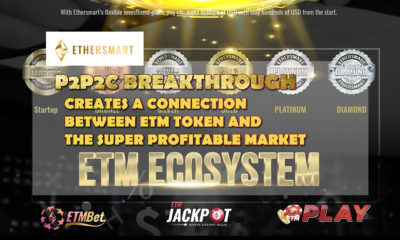
 Press Release5 years ago
Press Release5 years agoP2P2C BREAKTHROUGH CREATES A CONNECTION BETWEEN ETM TOKEN AND THE SUPER PROFITABLE MARKET
-
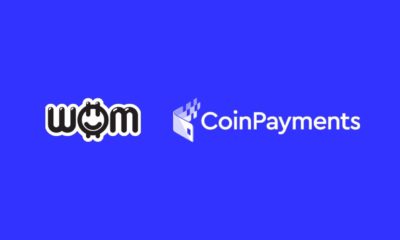
 Blockchain5 years ago
Blockchain5 years agoWOM Protocol partners with CoinPayments, the world’s largest cryptocurrency payments processor
-

 Press Release5 years ago
Press Release5 years agoETHERSMART DEVELOPER’S VISION MADE FINTECH COMPANY BECOME DUBAI’S TOP DIGITAL BANK
-
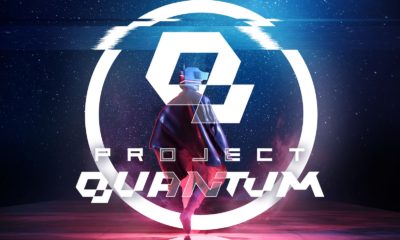
 Press Release4 years ago
Press Release4 years agoProject Quantum – Decentralised AAA Gaming
-
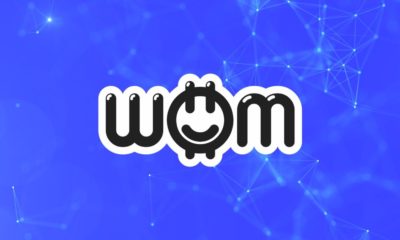
 Blockchain5 years ago
Blockchain5 years agoWOM Protocol Recommended by Premier Crypto Analyst as only full featured project for August
-
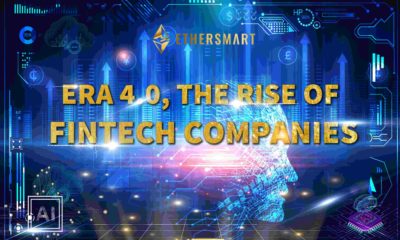
 Press Release5 years ago
Press Release5 years agoETHERSMART DEVELOPER’S VISION MADE FINTECH COMPANY BECOME DUBAI’S TOP DIGITAL BANK
-
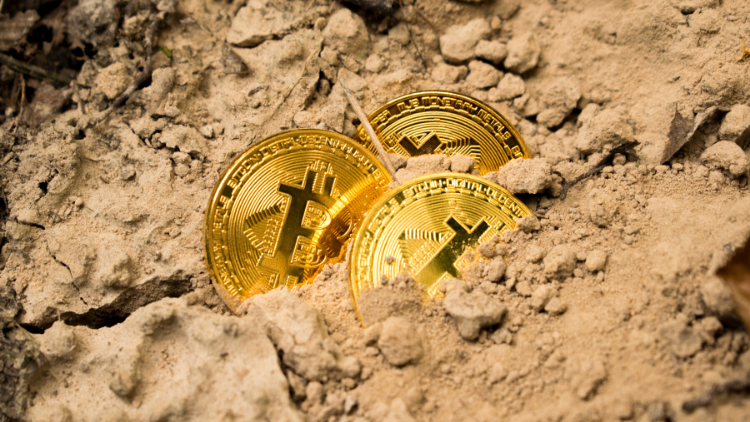
 Blockchain5 years ago
Blockchain5 years ago1.5 Times More Bitcoin is purchased by Grayscale Than Daily Mined Coins






